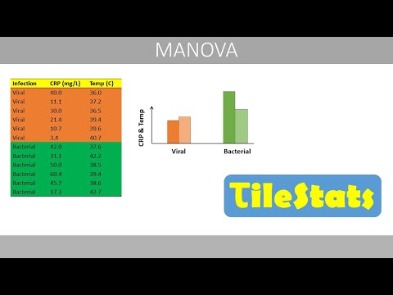Content
It provides for recording cash as revenue when your firm receives it. This method does not recognize various payment accounts, such as accounts receivable and payable. Clio Manage and other programs help firms organize their financial activities, from the expense and revenue tracking to managing billables.
It is too easy to put the funds in the wrong bank account, mismanage an account, accidentally use funds that need to be saved, or fail to report it correctly. Making mistakes with trust accounting can lead to penalties, suspension, or the loss of the right to practice law. When it comes to law firm accounting, there are a lot of things that can go wrong. If you put your firm’s bookkeeping and accounting on the back burner, you will have issues with cash flow, getting paid, and more. Below, we outline common legal accounting mistakes for you to avoid.
Accounting for Law Firms Best Practices
Accounting for law firms may be new or challenging to you, but it doesn’t have to be scary. What’s most important is that you get the details right so that you can stay compliant with ethics rules and help your firm grow to its full potential. If you’re not sure what tax deductions you should be watching for, our post covering the top tax deductions for lawyers and law firms is a good place to start. Eventually, your business will require the expertise of an accountant. As your business grows, it’s important to invest in professionals who can keep your accounting system on track, free up your time, and help you make better decisions for your business. Bookkeepers play a vital role in managing financial records, while accountants offer valuable expertise and financial advice.
If all your mental powers have been focused on getting your business off the ground, you might not yet fully understand what a bookkeeper does. In this guide we break down the day-to-day role of a bookkeeper, and why a good one is worth holding onto. Once you really know where you are starting and aware of the options, DRIVE your future. This is an active implementation of tactical pieces of your business. Accounting is a Tactical tool to the overwhelming Strategic challenge you are facing as a Small Law Firm.
What is Law Firm Accounting?
Additionally, users can generate reports by category or bill type to analyze their finances. For further assistance with the setup process of QuickBooks Online for lawyers in your office setting, the author is happy to come onsite if necessary. When choosing an accountant for a law firm, it is important to consider several qualities. The accountant should have experience with financial forecasting and strategy, preparing financial statements, and tax planning and compliance.
- This can be a valuable asset to your firm, as it can help you save time and money.
- Mixing up the two can give you a false picture of your firm’s financial health.
- Know you’re set up right with help from a QuickBooks expert who can help you connect your banks and credit cards, and learn best practices to use QuickBooks with confidence.
- Whether you hire someone or not, be sure that you are keeping good records and that you have a plan to stay organized.
- IOLTA can be used to track billable hours, expenses, client payments, and trust accounting.
- Cash accounting also gives you an easier way to see how much cash your business has at a glance.
You may want to consider hiring a dedicated team, including dedicated bookkeepers, who can help get caught up in no time at all. Whether you hire someone or not, be sure that you are keeping good records and that you have a plan to stay organized. Bookkeeping is the process of recording, classifying, and summarizing financial transactions.
Advantages of working with an accountant
Simply look at your bank balance and you’ll know exactly what the situation is. If you’re confident that you can manage a business credit card properly (that is, pay off the total in each month), it’s an excellent tool to grow your business. Your COA will look different depending on your jurisdiction, law firm’s size, https://goodmenproject.com/business-ethics-2/navigating-law-firm-bookkeeping-exploring-industry-specific-insights/ and practice area, but will always have these categories. Every lawyer that manages trust accounts should know what three-way reconciliation means. The difference is, the interest earned in a lawyers’ trust account is directed to the state IOLTA board to be used toward advancing legal services and non-profits.
While not necessary, we recommend working with a bookkeeper who has experience working with law firms. Knowing the fundamentals will enable you to be aware of your overall financial health, but trained accountants can still provide peace of mind and offer invaluable help. We strongly recommend that you contact Free Cash Flow (FCF) if you need assistance with Bookkeeping for the law firm.
Legal bookkeeping takes place before any accounting can occur and is an essential administrative task for any law firm. Reliable bookkeeping for attorneys also provides accurate financial data for legal accountants to work with. A very simple example of efficiency is accountants or law firm bookkeeping can customize clients’ invoices to present the data in the most effective way. Then other useful functions can be added like electronic payments in QuickBooks Payment. The value added is that the more effective the client’s invoice, the more quickly the lawyer will receive payment.
- By now, you know you can’t simply create a financial strategy and budget and sit back and relax.
- For example, if you’re expensing a meal, you might record who you were with and what you discussed.
- These are trained professionals who can keep you on track, ensure you’re always compliant and find ways to optimize your finances for future success.
- A forensic accountant’s job is to investigate, audit, and prove the accuracy of financial documents and dealings.
- They also exist to help you with financial statements, forecasting, and capturing expenses.
- You can use a physical folder or an online system like Expensify.
Speaking of expenses, one of the most common mistakes attorneys make is losing track of business expenses. It’s best to capture and record your business expenses on the daily, so you don’t lose those receipts or invoices. Then, set aside a time each week to make sure they are coded properly in your law firm bookkeeping books. We know that lazy bookkeeping practices will cost you real money and time, result in sweaty nightmares, and put your license and firm at risk. Thankfully, good bookkeeping can also result in accurate reports on demand, make billing easier and improve the way you view your finances.
What is the Difference Between Legal Accounting and Bookkeeping?
Not to mention, having access to up-to-date financial statements instantly is a great benefit. Professionals with experience bookkeeping for solo lawyers can help identify issues with cash flow. This can give you a current picture of your accounts and, in turn, enhance your law practice’s profitability! If your bookkeeper finds an upsurge in accounts receivable, then you can take an opportunity to change your firm’s fee structures, thus minimizing your firm’s exposure to bad debt. Your bookkeeper will help you track all information that is sent in and out of your business. Hiring an accountant is so much more than just to be used when it is tax time, and you are looking to file your tax return.







